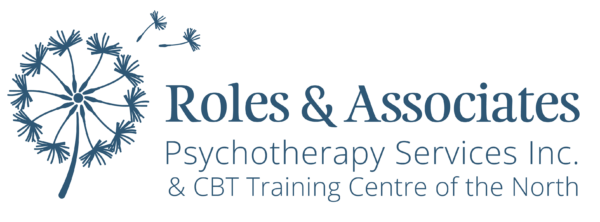Effective Communication: Building Stronger and Healthier Relationships
Written by: Jonathan Rom, MD MPH RP (Qualifying)

This piece of art is Rothko’s Four Darks in Red. What do you think the artist was trying to say with it? Some people see these saturated lines of red and black and notice the use of colour to reverse gravity, bringing out the often repressed, dark emotions that surface here above the lighter hues. Others conclude they could have been rich if they had just scribbled more in elementary school, since apparently that is all it takes to appear in the Museum of Modern Art. If we could just have the artist explain to us what this painting means to him, though, we would all be on the same page about what he was trying to convey…right?
The struggle of interpreting visual language, like in the example above, echoes how people struggle to communicate generally. Even with a full mastery over spoken language, how can you be sure that you said what you meant? Fidelity is a measure of how much of what was in your head accurately transferred over to the person you are communicating with.1 Rothko could give you a whole TED talk about his art while standing right beside you, and you may still not understand his message because of poor communication fidelity.
You have likely experienced this challenge in your own life, either when being misunderstood or misunderstanding those around you. Power’s & Witt (2008) proposed a framework of what improves communication fidelity, including1:
- When the person communicating and the person receiving the message have practiced, active listening skills.
(e.g. You and Rothko both practiced mindful listening in therapy, and are applying those skills to engage with each other’s ideas on what art means)
- When both of you have the same ideas about the social, cultural, and contextual factors influencing the conversation.
(e.g. Rothko understands this is your first time in an art museum because everyone in your family thinks art is silly. You understand that Rothko has dedicated his entire life to making art like this, so this conversation is where he thrives)
- Both parties understand the level of knowledge the other has on the topic.
(e.g. Rothko knows that you have never painted or studied art, and you know that Rothko is a big deal is the modern art world)
- When the person communicating makes the message connect to ideas and past experiences, and speaks using terms and phrases you likely already use.
(e.g. Rothko compared his painting to that time you exploded at work, how that moment flipped your inside and outside voices and people realized you were angry)
How do we achieve effective communication using these ideas? What can you do to improve your odds of being heard through skills-building? Notice how important active listening is in this model of communication fidelity. Active listening is when, as the listener, you actively engage in being present in the conversation, working to understand what is being said. It implies that you are motivated to pay attention to the person speaking. It is shown by verbally and nonverbally showing that you are invested in the conversation and understand what is going on.2
I have to use these skills often when working with clients as a psychotherapist, but I have found it is useful outside of work too. It is a skillset that requires practice, and there are specific mindfulness concepts you can practice often to make communicating easier. These include: Observing, describing, and non-judging. To observe, in this sense, is to improve awareness of sensations and information that your body can pick up on by explicitly noticing them. Describing is the skill of knowing which words capture different ideas and feelings. Non-judging is letting go of how things ‘should’ be and acknowledging how things actually are.2
These mindfulness tools can be repackaged as “how your brain processes what is right in front of you when you try to intentionally understand more”. You observe all the information you can absorb, accurately put it to words, and do not get distracted by your preconceived ideas of what that thing ‘ought’ to be. That means you are not just understanding what is being said, but why it is being said, and you can see deeper meaning in what is expected of you in the conversation. A friend who vents to you about their partner may or may not be looking for a problem-solving discussion. A partner who expressed annoyance about something small might be worried about something completely unrelated and much larger. It is up to you to practice processing more than just what is on the surface of your conversations.3
For those who struggle with this type of emotional-communicative clarity, mindfulness-based therapies have been found to be effective in improving these skills. Better yet, the worse you are at this type of introspective thinking, the better your results are from sitting with a therapist and learning and practicing these skills.4
If you or anyone you love is struggling with communicating effectively, Roles & Associates Psychotherapy Services Inc. has licensed psychotherapists ready to guide you through mindfulness-based therapies. To get matched with a therapist please call 705-929-1612; ext. 6 or email us at intake@rolespsychotherapy.com.
References:
- Powers, W. G., & Witt, P. L. (2008). Expanding the Theoretical Framework of Communication Fidelity. Communication Quarterly, 56(3), 247–267. https://doi.org/10.1080/01463370802240957
- Jones, S. M., Bodie, G. D., & Hughes, S. D. (2019). The Impact of Mindfulness on Empathy, Active Listening, and Perceived Provisions of Emotional Support. Communication Research, 46(6), 838–865. https://doi.org/10.1177/0093650215626983
- Bodie, G. D., Gearhart, C. C., Denham, J. P., & Vickery, A. J. (2013). The Temporal Stability and Situational Contingency of Active-Empathic Listening. Western Journal of Communication, 77(2), 113–138. https://doi.org/10.1080/10570314.2012.656216
- Cooper, D., Yap, K., & Batalha, L. (2018). Mindfulness-based interventions and their effects on emotional clarity: A systematic review and meta-analysis. Journal of Affective Disorders, 235, 265–276. https://doi.org/10.1016/j.jad.2018.04.018

